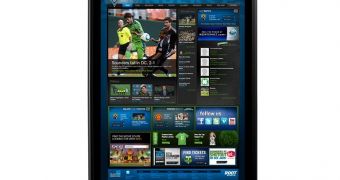One of the main enhancements that the new Windows Phone Mango platform arrives on devices with is the IE9 Mobile browser, which brings to handsets all of the features that desktop users already benefit from, including HTML5 video support, one of the most popular features of the HTML5 standard.
When it comes to smartphones, the feature is even more important, since it is supported in all major browsers across mobile platforms.
With no other standard for video delivery available with support for all major mobile OSes out there, HTML5 video becomes the interoperable way for embedding videos on web pages. Windows Phone Mango arrives on handsets with support for the HTML5 <video> tag in the browser. The implementation is standards-compliant and hardware-accelerated, and has been optimized so as to provide users with a great mobile viewing experience.
When accessing YouTube from their devices, users will be able to take advantage of this implementation, since the mobile site was specifically optimized for fitting the browser in Mango.
IE9 Mobile comes with the same implementation as the desktop browser, which offers the following when it comes to videos:
- Same markup: the same <video> HTML markup will run on bothIE9 desktop as well as on IE9 Mobile, i.e. the embedded video will play without any modification of your code.
- Same format: IE9 on Mango will play HTML5 video in H.264, the most widely used video format on the mobile web. For a thorough treatment of the topic regarding IE9’s support for H.264, the IE blog has a few excellent posts here, here and here.
- Same hardware acceleration: On Mango IE9, video playback is accelerated by the GPU on the device, the same way desktop IE9 video performance leverages the GPU.
The video viewing experience on small screens of phones has been optimized to be full-screen. The video controls will be those included in the full-screen native media player, which will launch automatically when an HTML5 video thumbnail is clicked on.
“To exit the video, just press the “back” button or wait for the video to end and you’ll be returned to the web page that hosts the video,” Rick Xu, program manager, Windows Phone, notes in a recent blog post.

 14 DAY TRIAL //
14 DAY TRIAL //